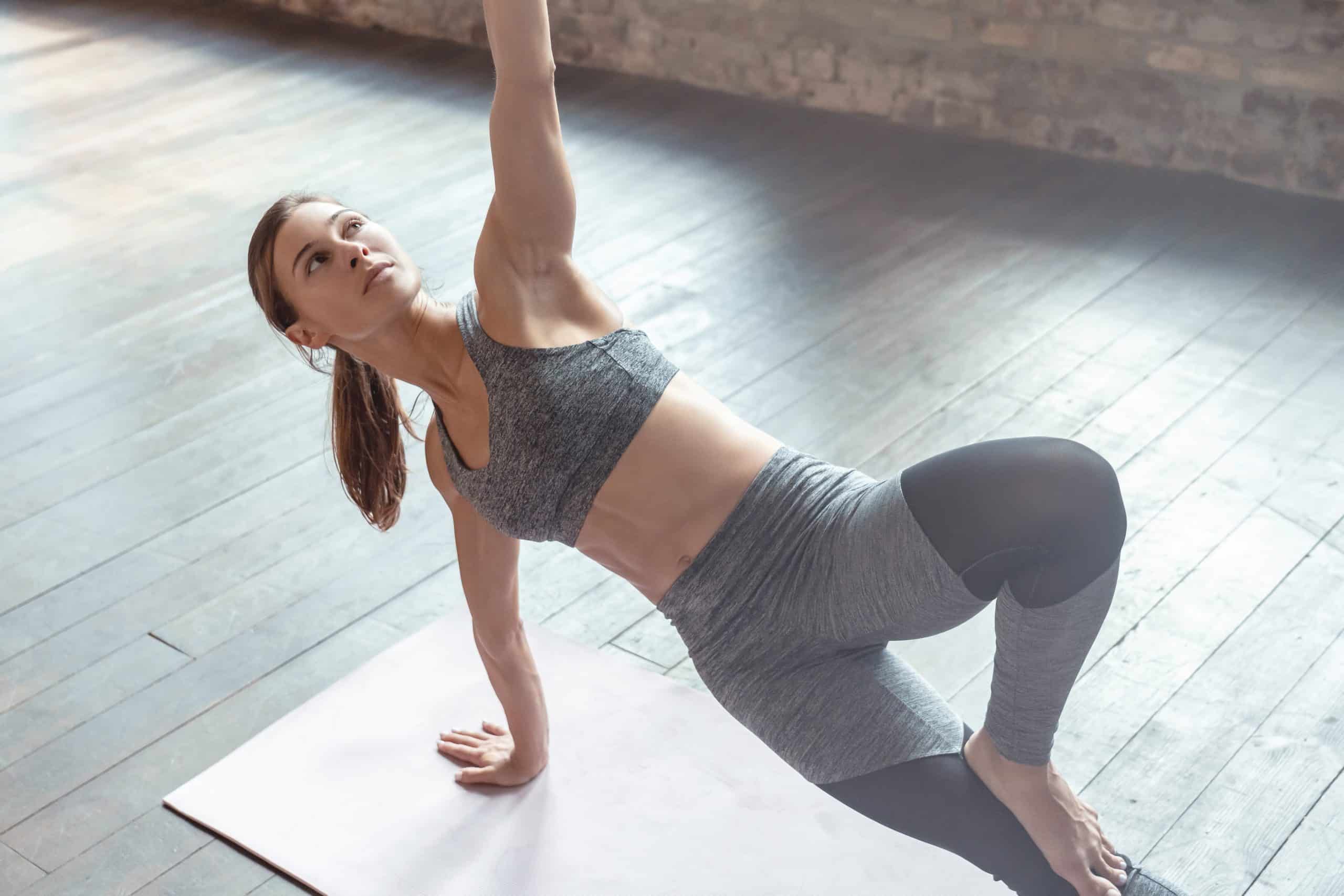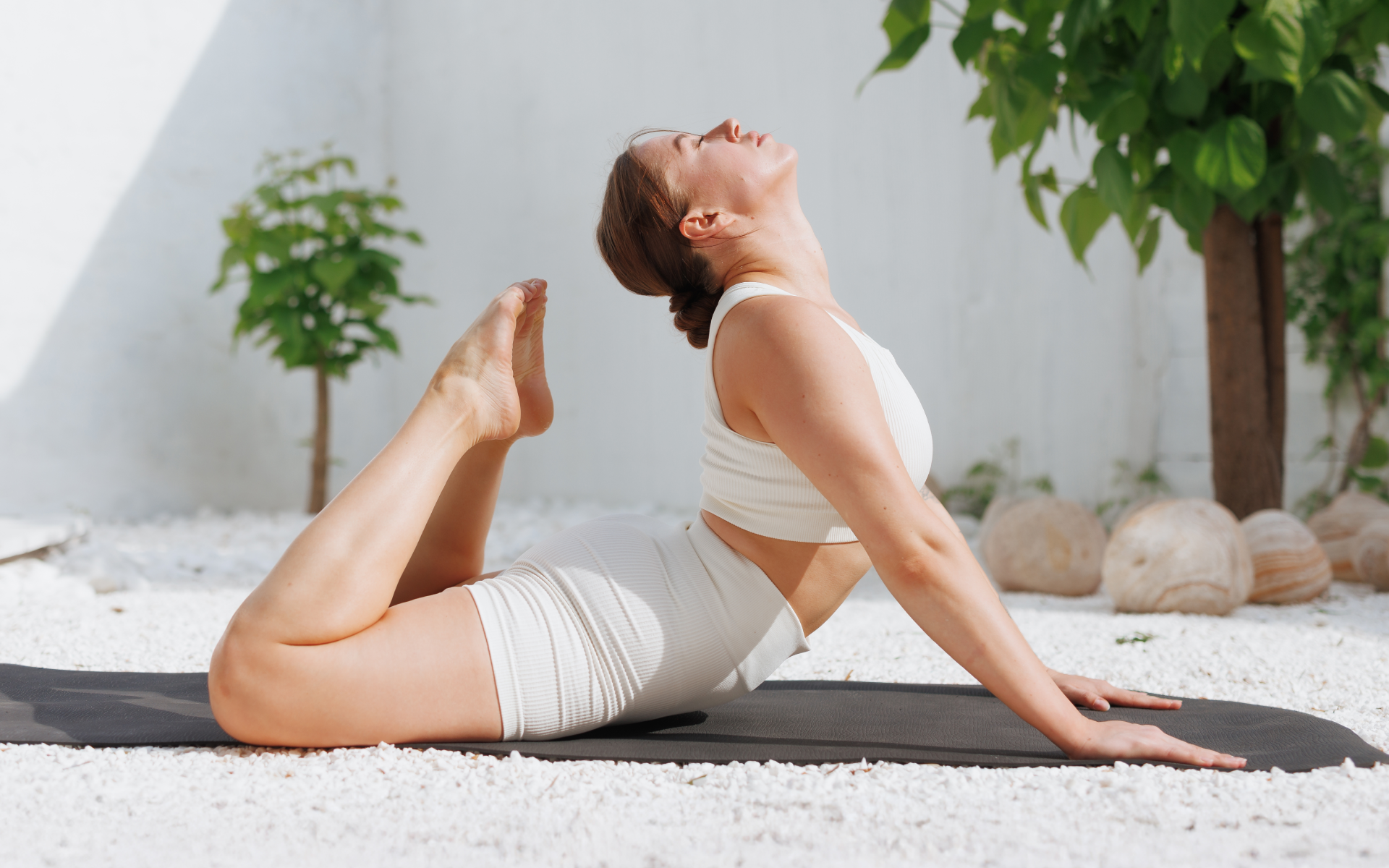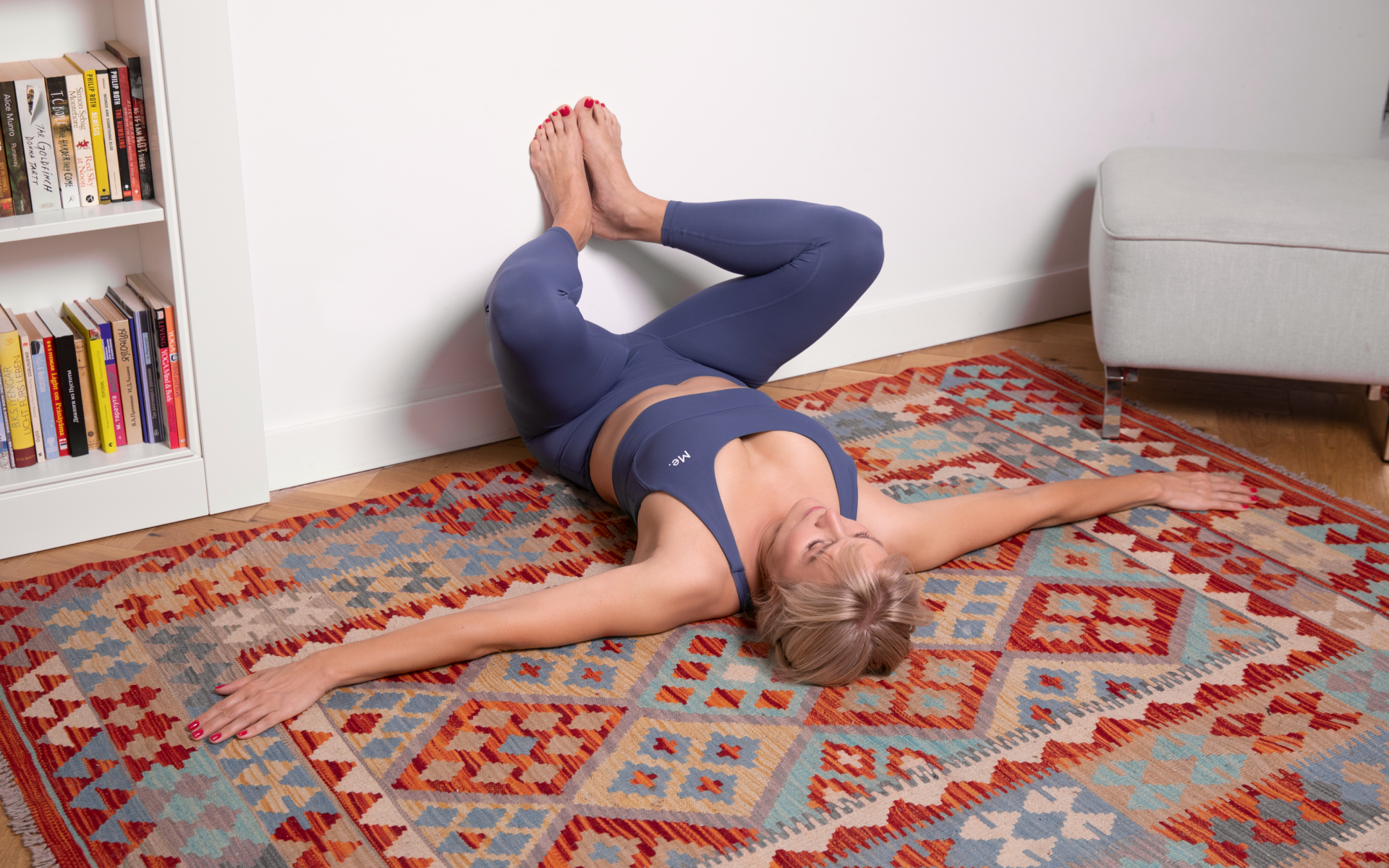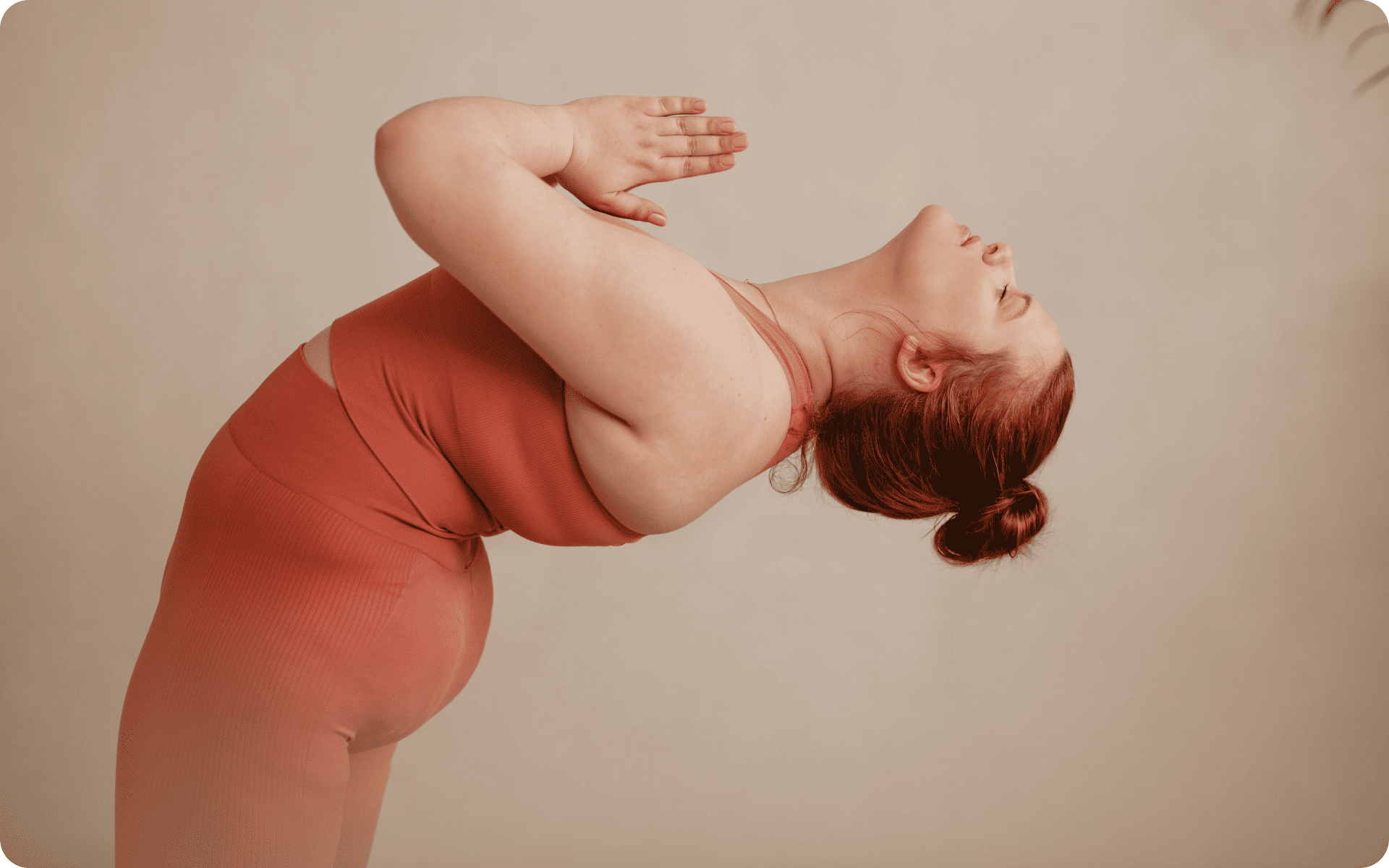Regular yoga practice can help you relax, strengthen body and mind, and improve your flexibility. Different styles of yoga cater to different needs, and CorePower Yoga is one such style that focuses on building strength, balance, and flexibility, while also incorporating elements of meditation and mindfulness.
Before we dive into the specifics of CorePower Yoga, we would like to highlight the importance of finding a yoga practice that works for you. Yoga is not a one-size-fits-all activity. It’s essential to find a style that resonates with your body and mind (1).
For some, this may be a slow-paced and gentle practice, while for others, it may be an intense and physically demanding one like CorePower Yoga. It’s best to listen to your body and choose a style that aligns with your physical abilities, goals, and preferences.
What is CorePower Yoga?
Core Power Yoga is a popular style of yoga that combines strength training, cardio exercises, and traditional yoga poses. Developed by Trevor Tice in 2002, this dynamic form of yoga has gained a following over the years.
Both he and fellow yogi Webster wanted to create a more intense and challenging form of yoga that would appeal to athletes and fitness enthusiasts.
Core Power Yoga is rooted in the belief that physical strength and mental focus are interconnected. It aims to strengthen both the body and mind, through a vigorous workout that incorporates various elements such as balance, flexibility, cardio, and resistance training (2).
You may wonder whether or not you can adapt the basic principles of Core Power Yoga and incorporate them into your own practice. The answer is yes – regardless of your level of experience or fitness, you can benefit from incorporating Core Power Yoga techniques into your daily routine.
What Type of Workout Is CorePower Yoga?
Core Power Yoga has its roots in two different styles of yoga – Ashtanga and Bikram. From Ashtanga, it takes the concept of a flowing sequence of postures that help build strength and flexibility. From Bikram, it adopts the hot yoga element – performing poses in a heated room (typically around 95-98 degrees Fahrenheit) to increase heart rate and promote detoxification.
While these elements are incorporated into Core Power Yoga, the main focus is on building core strength. The core muscles include not just your abdominal muscles, but also your back muscles, hips, and glutes. These muscles work together to support your spine, improve posture, and provide stability and balance during physical activity (3).
In Core Power Yoga, the core is targeted through various exercises such as planks, twists, crunches, and balancing poses. These exercises are often combined with traditional yoga poses to create a challenging yet balanced workout.
Now extrapolating this into your own practice, you incorporate exercises that focus on the core muscles before or after your regular yoga routine. This will not only help strengthen and tone your body but also improve your overall yoga practice.
Looking for a way to break the vicious cycle of weight loss and tone up all the jiggly parts? Watch the extra pounds fly off and your muscles firm up with the BetterMe: Health Coaching app!
Is Power Yoga Good for the Core?
Power yoga (or vinyasa yoga) is often used interchangeably with Core Power Yoga, but there are some slight differences. While Core Power Yoga primarily focuses on strengthening the core muscles, power yoga uses a faster pace and flow to create an intense workout.
Power yoga also incorporates more traditional elements of yoga such as breathing exercises and meditation, whereas Core Power Yoga tends to emphasize only physical strength and fitness.
Most importantly, CorePower is a specific brand owned by the CorePower Yoga studio, while power yoga is a more general term used to describe a dynamic style of yoga.
For the rest of this article, we will be focusing specifically on Power yoga, with an emphasis on core strength.
Check out our previous blog: Power Yoga Calories Burned, to learn more about the calorie-burning benefits of this style.
How To Practice Yoga for Core Strength
A core-focused yoga practice can be a great way to supplement your regular workout routine and improve overall strength and stability. Here are some tips on how to incorporate core-focused yoga into your daily routine:
- Start with basic poses: Begin with simple poses such as downward facing dog, plank, and boat pose to engage the core muscles.
- Incorporate balancing poses: Balancing poses such as tree pose, warrior III, or half moon pose not only challenge the core muscles but also help improve balance and coordination.
- Practice twists: Twists such as revolved triangle or twisted lunge target the obliques – the side abdominal muscles that are often neglected in traditional core exercises.
- Use props: Using props like blocks or straps can help modify poses and make them more accessible while still engaging the core muscles.
- Don’t forget to breathe: As with any yoga practice, mindful breathing is essential. Deep belly breaths can help activate the deep core muscles and maintain stability during challenging poses.
Read more: Japanese Yoga: A Deep Dive Into Mindful Movements
Yoga Poses for Core Strength
Here are a few specific yoga poses you can incorporate into your practice, to target the core muscles:
1. Boat Pose (Navasana)
Boat pose is a classic core-strengthening pose that targets the abdominal muscles, hip flexors, and spine.
- Sit on your mat with knees bent and feet flat on the ground.
- Lean back slightly and lift your feet off the mat, bringing your shins parallel to the floor.
- Extend your arms straight out in front of you, palms facing down.
- Engage your core.
- Hold this pose for several breaths.
2. Side Plank (Vasisthasana)
Side plank is an excellent exercise for targeting the obliques and building overall core strength and stability.
- Start in a plank position with palms flat on the mat, directly under your shoulders.
- Shift your weight to one hand and rotate onto the outer edge of that foot, stacking your feet on top of each other.
- Lift your free arm towards the sky, keeping it in line with your shoulder.
- Hold for several breaths.
- Switch sides and repeat.
3. Plank Pose (Phalakasana)
Plank pose is a foundational exercise that engages not only the core muscles but also the arms, shoulders, and glutes.
- Begin on all fours with hands directly under your shoulders and knees under the hips.
- Step both feet back to straighten your legs, keeping them hip-width apart.
- Engage your core.
- Maintain a straight line from head to heels.
- Hold for several breaths.
4. Warrior III (Virabhadrasana III)
Warrior III is a challenging balance pose that targets the core muscles, as well as the legs and glutes.
- Start in a standing position with feet hip-width apart.
- Shift your weight onto one foot.
- Extend the other leg behind you, keeping it parallel to the floor.
- Extend your arms straight out in front of you, palms facing down.
- Hold for several breaths.
- Switch sides and repeat.
5. Twisted Lunge (Parivrtta Anjaneyasana)
Twisted lunge is a great pose for targeting the obliques and improving spinal mobility.
- Start in a low lunge position with one foot forward and one knee on the ground.
- Place your hands on either side of your front foot.
- Twist your torso towards the front leg, placing one hand on the outside of your front foot and extending the other arm towards the sky.
- Engage your core and hold for several breaths.
- Switch sides and repeat.
BetterMe: Health Coaching app is a foolproof way to go from zero to a weight loss hero in a safe and sustainable way! What are you waiting for? Start transforming your body now!
FAQs
Who Owns CorePower Yoga?
CorePower Yoga is owned by a company called CorePower Yoga LLC, founded in 2002 by Trevor Tice.
Does CorePower Yoga Play Music?
CorePower Yoga classes often incorporate music, but it is not a requirement for the practice. Some classes may have more upbeat or energizing music, while others may play more calming and relaxing tunes.
Is CorePower Yoga Sculpt Good for Weight Loss?
Physical activity (defined as any bodily movement produced by skeletal muscles that results in energy expenditure) is essential for maintaining a healthy weight (4), and CorePower Yoga Sculpt can be a great option for those looking to lose weight. The practice combines traditional yoga poses with strength training exercises, creating an intense full-body workout that can help burn calories and build muscle mass.
However, it’s important to note that the amount of weight lost will depend on many factors such as diet, genetics, and overall level of physical activity. Consistency is key when it comes to any fitness routine, including CorePower Yoga Sculpt.
How Do I Quit CorePower Yoga?
Contact your local CorePower Yoga studio directly for cancellation and refund policies. Some studios may have specific procedures for discontinuing your membership. It’s always best to check with the specific location you attend for more information.
Check out our blog: 21-Day Chair Yoga for Core Strength for a beginner-friendly, low-impact practice that can be done anywhere – even at your desk
The Bottom Line
Incorporating Core Power Yoga principles into your routine can be an excellent way to strengthen the core muscles and improve overall physical fitness. While taking the original Core Power Yoga classes are an option, you can adapt the concepts to your own practice and fitness level. By incorporating core-focused poses and exercises into your yoga routine, you can build a strong and stable foundation for your body and enhance your overall yoga practice.
DISCLAIMER:
This article is intended for general informational purposes only and does not serve to address individual circumstances. It is not a substitute for professional advice or help and should not be relied on for making any kind of decision-making. Any action taken as a direct or indirect result of the information in this article is entirely at your own risk and is your sole responsibility.
BetterMe, its content staff, and its medical advisors accept no responsibility for inaccuracies, errors, misstatements, inconsistencies, or omissions and specifically disclaim any liability, loss or risk, personal, professional or otherwise, which may be incurred as a consequence, directly or indirectly, of the use and/or application of any content.
You should always seek the advice of your physician or other qualified health provider with any questions you may have regarding a medical condition or your specific situation. Never disregard professional medical advice or delay seeking it because of BetterMe content. If you suspect or think you may have a medical emergency, call your doctor.
SOURCES:
- 7 Different Kinds of Yoga and How To Find the Right Practice (2022,clevelandclinic.org)
- Why CorePower Yoga Isn’t Just Another Yoga Class (2016,torque2016.org)
- The real-world benefits of strengthening your core (2012,harvard.edu)
- Physical activity (2024,nih.gov)









